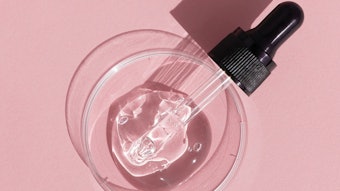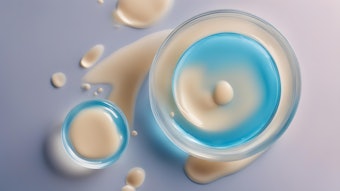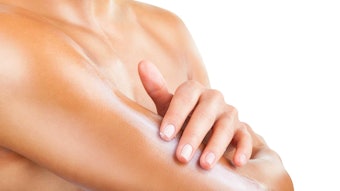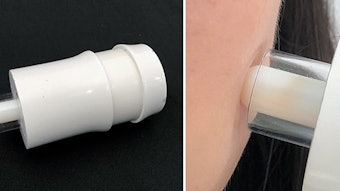
Skin sensitivity is a common complaint among consumers. The prevalence of this condition in Europe, Japan and the United States is approximately 50% in women and 40% in men.1 Sensitive skin is prone to itching, stinging, tingling and burning sensations. These may be triggered by external factors—e.g., UV radiation, cold, heat, wind, pollutants, chemicals, cosmetics, diet, alcohol, et cetera—or internal factors such as stress, emotions and hormones.
No clear pathophysiological definition for skin sensitivity has yet been given. The underlying mechanisms do not appear to be primary immunologic or allergic in nature. Altered barrier function is sometimes present in affected subjects but this is not a universal finding. On the other hand, commonly reported abnormal sensations point to the involvement of the neurological system.2
The French expression, “Avoir les nerfs à fleur de peau,” poetically describes how nerves may convey emotion to the edge of skin. Nerve cells do so by releasing neuromediators such as substance P (SP), which acts on both the vascular bed to cause vasodilation and increase permeability, and on skin cells to promote the release of pro-inflammatory cytokines including some interleukins (IL-1 and IL-8) and tumor necrosis factor-alpha (TNF-α). This leads to skin edema and redness in a process called neurogenic inflammation.3 In sensitive skin, inflammation tends to sustain itself in a situation that, if not addressed properly, leads to more severe skin problems and causes premature aging.
The skin has its own way to deal with neurogenic inflammation. It may fight back by locally producing the neuropeptide α-melanocyte stimulating hormone (α-MSH). This decapeptide results from the post-translational processing of the pro-hormone molecule proopiomelanocortin (POMC) itself, a precursor of many biologically active peptides.
α-MSH was first known for its pigment-inducing action on melanocytes through the binding of melanocortin receptors on these cells. Additional studies have revealed a broad anti-inflammatory effect of α-MSH apparently mediated by a modulation of nuclear factor κ-β activity (NF-κβ). More recently, this anti-inflammatory activity has been pinned down to specific peptide fragments of α-MSH that do not elicit significant melanogenic activity.4
In relation, the present paper explores the anti-inflammatory and anti-irritation activities of a biomimetic lipopeptide derived from POMC: Palmitoyl tripeptide-8a.
In vitro Materials and Methods
Ingredient: Palmitoyl tripeptide-8 is a three-amino acid biomimetic lipopeptide derived from POMC. POMC is a natural precursor of various neuromediators with important roles in skin physiology including anti-inflammatory activities. Although not illustrated in the present paper, palmitoyl tripeptide-8 did not elicit melanogenic activity at the concentrations used in the anti-inflammatory/anti-irritation studies described here.
In vitro keratinocyte studies: Keratinocytes derived from normal human skin (NCTC 2544) were UVB-irradiated (230 mJ/cm2) to induce an irritation response, then incubated for 24 hr in the presence or absence of palmitoyl tripeptide-8 (10-7 M and 10-9 M) or α-MSH (10-11 M), as the positive control. The release of IL-8 was quantified in cell culture media using the enzyme-linked immunosorbent assay (ELISA).
In vitro fibroblast studies: Non-confluent normal human dermal fibroblasts (NHDF) were treated for 24 hr with IL-1 (0.1 ng/mL), as an inducer of IL-8 production, in the presence or absence of palmitoyl tripeptide-8 (10-7 M) or α-MSH (10-11 M), as the positive control. Again, the release of IL-8 was quantified in cell culture media using the enzyme-linked immunosorbent assay (ELISA).
Ex vivo protocol: Four human skin specimens were obtained from patients undergoing plastic surgery (Caucasian women, 35–45 years old). Explants were maintained in culture for 24 hr in the presence of SP (10-5 M), to mimic inflammation, with or without palmitoyl tripeptide-8 (10-7 M). Explants were then fixed and embedded in paraffin. Thick sections of 5 µm were stained with hematoxylin and eosin in preparation for capillary size and edema evaluation.
Capillary size evaluation: Morphometric analyses of blood vessels were performed on stained skin sections. Vessels presenting with an increased lumen were counted and results were expressed as a percentage of total vessel counts. Additionally, the surface (µm²) occupied by the lumen of vessels was measured to evaluate the mean skin surface occupied by capillaries.
Skin edema evaluation: Edema was evaluated histologically on the papillary dermis and upper part of the reticular dermis in perivascular localizations. Edema is characterized by increased spacing between collagen bundles. Visual scoring was performed by two dermatologists in a double-blind manner, using a 10 × Olympus objective. Four slides per skin specimen were scored for each treatment. Scores ranged from 0 (negative) to 4 (maximum), as follows: No edema = 0; slight edema = 1; moderate edema = 2; marked edema = 3; and severe edema = 4.
The biomimetic peptide described is derived from POMC, a natural precursor of various physiological neuromediators.
Clinical Study Protocols
Preventing irritation: Eight volunteers of an average age of 42.1 years old with normal skin participated in a skin irritation prevention study. Subjects applied a placebo or test formula (see Formula 1) containing palmitoyl tripeptide-8 (4 x 10-6 M) three times daily for eight days on separate areas of the volar side of the forearm (Day -8 to Day 0).
On Day 0, single patches containing 250 µL of an aqueous 0.5% sodium dodecyl sulfate (SDS) solution were applied for 24 hr. On Day 1, all patches were removed. On Day 2, skin temperature was measured using thermovision on all test areas and images were taken using a video microscope. Thermovision measures skin surface temperature by recording thermal heat emissions. This provides quantitative information on the status of inflammation in the skin.5 Used in combination with photodocumentation (video microscope), the two methods give a neat estimation of inflammatory skin responses.
Soothing irritation: A total of 13 volunteers of an average age of 42.1 years old having normal skin participated in a study for skin soothing effects. On Day 0, single patches containing 250 μL of an aqueous 0.5% SDS solution were applied for 24 hr on separate areas of the volar side of the forearm. On Day 1, patches were removed. On Day 2, subjects applied a placebo or test formula (same Formula 1) containing 4 × 10-6 M palmitoyl tripeptide-8 three times daily for two days (Day 2 to Day 4). On Day 4, skin temperatures were measured using thermovision on all test areas and images were taken using a video microscope.
Results: Keratinocytes and Fibroblasts
As the first step in evaluating palmitoyl tripeptide-8 to modulate inflammation, in vitro experiments were conducted with keratinocytes and fibroblasts to assess the effects of the peptide on the production of pro-inflammatory cytokines by these cells.
Keratinocytes: In the skin, keratinocytes are generally the first cells to be challenged by external stimuli. They respond to external aggressions such as UV by producing cytokines including IL-8 that serve as messengers.6 Cytokines act through specific receptors found at the surface of various cell types, including immune cells, making them powerful mediators of inflammation. Cytokine-driven inflammatory reactions are a major cause of skin erythema (redness) and edema (swelling). Alterations in cutaneous and systemic immunity also occur due to UV-induced inflammation and cytokine production.
Here, in UVB-irradiated keratinocytes, palmitoyl tripeptide-8 dose-dependently inhibited IL-8 production. Inhibition reached -32% when the peptide was used at a concentration of 10-7 M (see Figure 1, top). This was comparable to the inhibition observed in the presence of α-MSH, which served as a positive control in this experiment. Such data supports palmitoyl tripeptide-8 as an efficient inhibitor of UVB-induced cytokine-mediated cutaneous inflammation.
Fibroblasts: Although keratinocytes produce IL-8 when activated by external stimuli, their production is usually low. By contrast, dermal fibroblasts generate 100 to 1,000 times more IL-8 than keratinocytes when stimulated by IL-1.7 IL-1 is released by activated keratinocytes when the skin is challenged and this mobilizes fibroblasts to produce additional IL-8. IL-1-driven IL-8 production therefore represents a potent pathway for the amplification of inflammatory signals.
In IL-1 treated fibroblasts, palmitoyl tripeptide-8 inhibited IL-8 production more potently than α-MSH, which served as the positive control. Inhibition reached -64% when the peptide was used at a concentration of 10-7 M (see Figure 1, bottom). This data confirmed that palmitoyl tripeptide-8 has the potential to act as a strong modulator of pro-inflammatory cytokine production in skin cells.
Palmitoyl tripeptide-8 may be useful to prevent and sooth irritated skin and restore a normal skin sensitivity threshold.
Results: Vasodilation and Edema
To document the effects of palmitoyl tripeptide-8 on neurogenic inflammation in the skin, additional experiments were conducted using skin explants exposed to SP. The latter is a neuropeptide released by nerves and inflammatory cells during inflammation. SP, acting through selective receptors, increases vascular permeability, causing local redness (erythema) and swelling (edema). SP also triggers the release of pro-inflammatory cytokines including IL-1 and IL-8 by keratinocytes and fibroblasts.8-10
Vasodilation: As shown in Figure 2 (left), topical application of SP induced vasodilation, increasing the number and size of dilated capillaries in the superficial dermis of skin explants. However, these effects were significantly reduced in the presence of palmitoyl tripeptide-8. Inhibition reached -30% for the number of dilated capillaries (not shown) and -51% for the size of dilated vessels (see Figure 2, upper right). These results demonstrate palmitoyl tripeptide-8 can inhibit microvascular vasodilation in the skin.
Edema: In SP treated skin explants, the formation of edema appeared as an increase in white spaces between bundles of collagen (see Figure 2, lower left). The addition of palmitoyl tripeptide-8 during SP treatment, though, significantly inhibited the phenomena by -60%, which was an improvement even over the control (see Figure 2, lower right). Such results demonstrate palmitoyl tripeptide-8 can reduce edema in skin.
Results: Clinical Studies
The potential of palmitoyl tripeptide-8 to prevent and stop skin inflammation and irritation under real-life conditions was assessed by clinical studies. For this purpose, as noted, the skin of human volunteers was challenged with SDS 0.5%, an ionic surfactant known to be a skin irritant. Palmitoyl tripeptide-8 was applied to the skin before or after the SDS challenge, and skin inflammation and irritation were documented trough thermovision measurements and imaging.
Preventive: As shown in Figure 3 (upper right), when palmitoyl tripeptide-8 was applied to prevent irritation, the increase in skin temperature caused by the SDS challenge was reduced an average of -112%, or down to baseline level. Placebo results were not significantly different from the data obtained with SDS (not shown). Photographs also documented a neat prevention of SDS-induced redness when palmitoyl tripeptide-8 was applied to the skin (Figure 3, bottom right) before the challenge. A typical result is shown here.
Soothing: In Figure 4 (upper right), the increase in temperature caused by the SDS challenge was reduced an average of -78% when palmitoyl tripeptide-8 was applied afterward to sooth skin. Placebo results were not significantly different from the data obtained with SDS (not shown). Again, photographs documented a neat reduction of SDS-induced redness when palmitoyl tripeptide-8 was applied to the skin (Figure 4, bottom right) post-challenge. A typical result is shown here.
Conclusions
Palmitoyl tripeptide-8 is a biomimetic active derived from a neuropeptide with known anti-inflammatory activity. It is shown here to modulate the production of pro-inflammatory cytokines by skin cells, which is key to stopping the initiation of inflammatory cascades that contribute to modifications of the microvasculature and lead to edema and redness in sensitive skin.
Palmitoyl tripeptide-8 also successfully prevented and alleviated irritation and inflammation in chemically-challenged but otherwise normal skin. It may therefore be useful in both preventive and soothing care to help restore and maintain a normal skin sensitivity threshold. The ingredient is well-indicated for formulations aimed at reducing skin irritation caused by UV, immune reactions, internal stress or mechanical stress, returning sensitive skin to a peaceful, “zen-like” state.
References
- R Kamide, Sensitive skin evaluation in the Japanese population, J Dermatol 40(3) 177-181 (2013)
- L Misery et al, Sensitive skin, J Eur Acad Dermatol Venereol 30 (suppl 1) 2-8 (2016)
- D Roosterman et al, Neuronal control of skin function: The skin as a neuroimmunoendocrine organ, Physiol Rev 86(4) 1309-1379 (2006)
- TA Luger and T Brzoska, alpha-MSH related peptides: A new class of anti-inflammatory and immunomodulating drugs, Ann Rheum Dis 66 (suppl 3) iii 52-55 (2007)
- I Całkosi´nski et al, The use of infrared thermography as a rapid, quantitative and noninvasive method for evaluation of inflammation response in different anatomical regions of rats, Biomed Res Int I972535 1-9 (2015)
- A Grandjean-Laquerriere et al, Contribution of protein kinase A and protein kinase C pathways in ultraviolet B-induced IL-8 expression by human keratinocytes, Cytokine 29(5) 197-207 (2005)
- IL Boxman et al, Role of fibroblasts in the regulation of proinflammatory interleukin IL-1, IL-6 and IL-8 levels induced by keratinocyte-derived IL-1, Arch Dermatol Res 288(7) 391-398 (1996)
- JY Liu et al, Effect of matrine on the expression of substance P receptor and inflammatory cytokines production in human skin keratinocytes and fibroblasts, Int Immunopharmacol 7(6) 816-823 (2007)
- MC Branchet-Gumila et al, Neurogenic modifications induced by substance P in an organ culture of human skin, Skin Pharmacol Appl Skin Physiol 12(4) 211-220 (1999)
- D Roosterman et al, Neuronal control of skin function: The skin as a neuroimmunoendocrine organ, Physiol Rev 86(4) 1309-1379 (2006)











